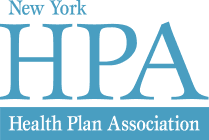MEMORANDUM IN SUPPORT
FOR IMMEDIATE RELEASE: May 16, 2016
Re: S.7686 (Hannon)A.10026 (McDonald) – An act to amend the public health law, in relation to prescription drug cost transparency.
The New York Health Plan Association (HPA) supports S.7686/A.10026, which would provide consumers with valuable information about prescription drug prices and the impact those prices have on the cost of health insurance and health care in New York.
In 2013, spending on prescription drugs jumped 13 percent to $374 billion, the biggest percentage increase since 2001. Dramatic hikes in prices for many common drugs are helping fuel the overall increase in drug spending. For example, the cost of Humlin R U-500 insulin jumped more than 350 percent between 2007 and 2014. Epi-pens, used to treat severe allergic reactions, went up 222 percent in that same seven year period
According to Reuters, since January 1, 2016, pharmaceutical giant Pfizer has raised prices on more than 100 of its prescription drugs. Some of those drugs, like those to treat symptoms of menopause or combat seizures, went up by more than 20 percent. Pfizer did not reduce the price of any its prescription drugs.
Rising drug costs also place an increasing burden on payers, employers and patients. Notably, new Hepatitis C virus (HCV) therapies that treat the underlying disease with remarkable efficiency offer a drastic improvement over previous therapies. Yet, however effective, its price at $1,000 per pill — or $84,000 over the course of treatment — is raising prescription costs and access issues for consumers who are struggling with substantial out-of-pocket costs.
Consumers are very concerned about high prescription drug prices. In a May 2015 Morning Consult survey, 75 percent of respondents said prescription medication is too expensive. A June 2015 Kaiser Health Tracking Poll showed 76 percent of those who said health care costs are unreasonable indicated it is because pharmaceutical companies set drug prices too high.
The ability to analyze drug prices and underlying costs that drive pricing is critical to informing the development of policies that will ensure access to affordable medications. This legislation will enhance transparency in prescription drug pricing so policymakers and purchasers can deliver on the promise of health care coverage and affordability. It will also provide transparency for consumers to assist them in making more informed choices about their prescription medications.
Drug companies use the cost of research and development as justification for drug prices, but there is virtually no data available to the public showing the link between prices and development costs. State policymakers and purchasers — including the state Medicaid program, the New York State Health Insurance Program (NYSHIP) and its Empire Plan, self-insured union benefit funds, large and small employers, and individual consumers — should be able to see if a drug price is due to research and development costs or advertising and exorbitant profits for the manufacturer.
Health plans, insurers, hospitals, and physicians are all required to periodically submit extensive cost and quality data to regulators. The Affordable Care Act (ACA) has increased transparency across our health care system but, unfortunately, not regarding prescription drug costs and pricing. Pharmaceutical manufacturers should report data to the New York State Department of Health (DOH) in order to provide taxpayers, policymakers and consumers with insight into cost centers associated with drug development and availability. If the high cost of drugs is justified by the investment the pharmaceutical companies have made to develop, manufacture and market these drugs, then the reporting requirements of this bill will demonstrate this.
For these reasons, HPA supports the transparency of prescription drug costs.
